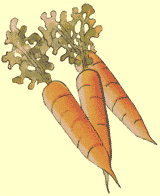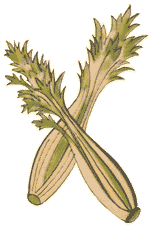| REVIEWED RECIPES |
| More popular recipes... |
| FEATURED |
| SPECIAL RECIPES |
| More featured recipes... |
| Thanksgiving Side Dishes · Turkey! · Stuffings · I Love Cranberries · Old-Fashioned Cranberries · Cranberry Juice · Leftovers |
| HOMEMADE TURKEY BROTH OR STOCK | |
|
On the day before Thanksgiving, I usually cook a turkey. No, it's not what you think! We don't serve turkey two days in a row.
Of course, a broth can be made using just turkey parts, such as necks, backs, giblets, etc, if you have enough of them (3-5 lbs). Whether you use parts or a whole turkey, the method is basically the same, except that if a turkey is used, you'll have a large quantity of turkey meat which can be frozen for use in salads, casseroles and pot pies later on. And the same method is also a good one when chicken broth is wanted by substituting chicken for the turkey (or even a combo). If you have a butcher, have him cut the turkey into halves or quarters; otherwise, the turkey will produce fine broth as-is and can be taken apart after a few hours of cooking, if desired. The darker meat contains more flavor than the breast; for this reason, I sometimes remove the breast before making the broth and save it for another use (such as stuffed turkey breast, turkey pot pies or breaded turkey cutlets) or the breast may be poached in the broth during the final 40 minutes of cooking. The key to a good stock is to bring the water to a boil once at the beginning and then cook at just barely a simmer for the remainder of the production; long slow cooking is best to extract all the subtle flavors.
Taste the broth often and add what you think it needs. There is a point a few hours after you've begun, where the flavor of the broth will reach the sweetest and freshest flavor that it will achieve. After that point, simmering any further may infuse the broth with a more concentrated turkey flavor, but the sweetness of the vegetables will begin to decline. Some of this may be offset by adding the second layer of vegetables later on in the cooking time, or for a delicately flavored broth, remove from the heat at this point and refrigerate until the big day where this superior rendition of home-made stock will help you bring extra flavor to gravy, stuffing or any Turkey-day dish calling for broth. Any leftover broth can be refrigerated for up to a week and used for turkey soup or made into gravy for turkey pot pie, or it can be frozen for later use. For small portions, freeze in large capacity silicone freezer trays. Toss a sprig of parsley into each cube; the parsley keeps well and looks great this way. Pop out cubes once they are frozen and keep them handy in a resealable plastic bag on the freezer door. If stored in larger containers, leftover cooked turkey may be added to the broth after the Holiday meal. Another simple way to freeze broth is to line a large bowl with two layers of heavy duty aluminum foil, leaving enough over the edges of the bowl so that you will be able to cover it. Fill the bowl up to an inch from the rim with leftover turkey broth and freeze it. When the liquid has frozen, cover it with the excess foil tightly and remove the solid mass from the bowl. Label and freeze. 3-10 lbs whole turkey or parts (or chicken) 1-3 lbs carrots 1-2 lbs onions 4-5 celery stalks and leafy tops 3-4 bay leaves 1-2 leeks, split, washed well and chopped 1 whole head garlic, peeled 1/3 cup fresh parsley pinch thyme, Rosemary, oregano other seasonings (see above) 1/2 teaspoon black or green peppercorns 2 tablespoons olive oil and/or butter In a stockpot large enough to hold the turkey (a turkey fryer pot works well), sauté giblets, necks, and any smaller turkey or chicken parts with chopped onion, garlic and leeks (optional) in a small amount of olive oil and/or butter until they take on some color, about 10 minutes. Add remaining turkey and cover with cold water. Allow a little less than a quart of water per pound of turkey. Bring to a boil. When the broth begins to boil, reduce heat to a bare simmer (tiny bubbles will form near the edges). Add half of the vegetables and seasonings (except for just a pinch of salt which should be added mostly at the end after the broth has reduced), and all of the bay leaves you'll be using. Some like to stick a few whole cloves into boiling onions to add to broth; this is optional and adds a hint of spicy sweetness, but adding too many will spoil the broth (I prefer the tastes of sage, garlic, celery and parsley which can sometimes be overpowered by the few cloves, but this is a matter of choice). Use the larger quantity of vegetables and herbs listed if you've got a larger turkey. Turkey should remain covered while cooking; if broth reduces before the turkey is tender enough to cut up and return to the soup, more boiling water or broth should be added. Skim the surface of the broth frequently to remove any foam which rises in order to keep the stock clear. Halfway through the cooking, add the remaining ingredients (more onions, celery, etc). This is usually a good time to cut up and return the turkey to the broth so that the level of soup in the pot may be allowed to reduce and concentrate. Remember not to allow the broth to boil or the sweet and delicate flavors will be lost. When the broth is done and reduced to the degree desired, remove from heat and season to taste with salt and pepper (about 1 teaspoon of salt per quart). Strain out the turkey and vegetables, if desired and use in other dishes or add back to the stock for use in soup when needed. Refrigerate the stock, and when cooled, remove any excess fat which has accumulated at the top. Broth tastes even better the next day. If your broth tastes weak, either it hasn't simmered long enough, or you haven't added enough to flavor it. If you don't have the time or ingredients, a spoonful or two of low sodium Turkey or Chicken Soup Base (available at restaurant supply stores) may be stirred in on those occasions when you're in a hurry. Happy Holidays! Submitted by: CM | |
| 8 reviews | Add review Share |
SPREAD THE LOVE - SHARE THIS RECIPE | |||
| Print recipe: | Printer-friendly version | ||
| Link to recipe: | Copy | ||
| Email recipe to: | |||
| ADD YOUR REVIEW |
| RECIPE PULSE |
| TRENDING NOW |
 The day-before turkey has a special role in the Holiday kitchen as the star in our turkey sized stockpot. A small turkey (10 lbs or less) will do, and is one of the best values of the holiday season, since turkeys are usually on sale this time of year.
The day-before turkey has a special role in the Holiday kitchen as the star in our turkey sized stockpot. A small turkey (10 lbs or less) will do, and is one of the best values of the holiday season, since turkeys are usually on sale this time of year. To develop layers of flavor in the broth, I often add vegetables and herbs at the beginning, then again during the final half hour of cooking. Onions break down and have mostly disappeared when added at the start, but they add greatly to the sweetness of the stock. I add one or two more sweet onions an hour or so before the stock has finished developing. And always use fresh parsley; there is no substitute in making broth. A little bit of sage goes a long way so use it sparingly, but it is surely a great companion herb for any poultry dish. One or two bay leaves are a must as are fresh peppercorns (green if you can get them). A pinch of celery seed enhances the savory contribution celery provides. A few carrots (big organic carrots hold up better than baby carrots here) will bring sweetness and a wholesome color addition to the soup. Whole garlic cloves can be tossed in whenever you have the inkling throughout the earlier cooking time, while minced or pressed garlic may be added near the end.
To develop layers of flavor in the broth, I often add vegetables and herbs at the beginning, then again during the final half hour of cooking. Onions break down and have mostly disappeared when added at the start, but they add greatly to the sweetness of the stock. I add one or two more sweet onions an hour or so before the stock has finished developing. And always use fresh parsley; there is no substitute in making broth. A little bit of sage goes a long way so use it sparingly, but it is surely a great companion herb for any poultry dish. One or two bay leaves are a must as are fresh peppercorns (green if you can get them). A pinch of celery seed enhances the savory contribution celery provides. A few carrots (big organic carrots hold up better than baby carrots here) will bring sweetness and a wholesome color addition to the soup. Whole garlic cloves can be tossed in whenever you have the inkling throughout the earlier cooking time, while minced or pressed garlic may be added near the end.